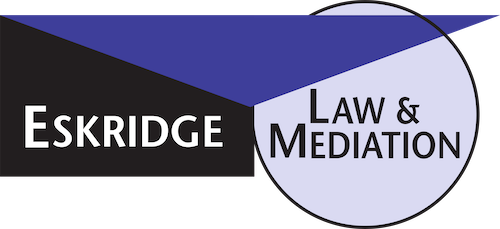By Gayle Eskridge, Principal, Eskridge Law, and member, LACBA Professional Responsibility
and Ethics Committee. She can be reached at geskridge@eskridgelaw.net. The opinions
expressed below are her own.
In a case which addressed the often vexing situation of the attorney-client privilege as it
applies to jointly represented clients, the California Second District Court of Appeal ruled earlier this
year that: “In a lawsuit between an attorney and a client based on an alleged breach of a duty arising
from the attorney-client relationship, attorney-client communications relevant to the breach are not
protected by the attorney-client privilege.” [Anten v. Superior Court (Weintraub) (2015) 233
Cal.App.4th 1254, 1256.] For attorneys who find themselves in litigation with one former joint
client, this case provides long overdue guidance.
In this case of first impression, Lewis Anten and two other clients (Arnold and Lillian Rubin)
retained a law firm to advise and represent them in a matter of common interest. Subsequently,
Anten sued the lawyers for malpractice. In response to discovery, the lawyers objected that Anten’s
discovery sought communications between the lawyers and the Rubins that were protected by the
attorney-client privilege, which the Rubins expressly declined to waive. Anten moved to compel
further responses, and the superior court (Hon. Elizabeth White) denied the motion on the basis of
the attorney-client privilege objection. Anten petitioned for writ relief, which the Court of Appeal
granted. [Id. at 423-424.]
In ruling to allow the discovery, the Court of Appeal began with a general discussion of
Evidence Code section 958, which provides that there is no attorney-client privilege “as to a
communication relevant to an issue of breach, by the lawyer or by the client, of a duty arising out of
the attorney-client relationship.” The rationale for this exception is of course that it would be unjust
to permit clients to accuse their attorneys of a breach of duty and to invoke the privilege to prevent
the attorneys from producing evidence in defense of the charges. [Id. at 425, citing Solin v.
O’Melveny & Myers (2001) 89 Cal.App.4th 451, 463, and also referencing Glade v. Superior Court
(1978) 76 Cal.App.3d 738, 746.]
Previous case law has clarified Evidence Code section 958, holding that the exception is
limited to communications between the lawyer charging or charged with a breach of duty, on the one
hand, and the client charging or charged with a breach of duty, on the other. For example, in
Schlumberger Limited v. Superior Court, the Court held that a legal malpractice defendant cannot
invoke the exception in order to permit discovery of communications between the plaintiff and the
attorney representing the plaintiff in the malpractice action. [Schlumberger Limited v. Superior
Court (1981) 115 Cal.App.3d 386, 392-393.] Likewise, a legal malpractice plaintiff cannot invoke
the exception in order to permit discovery of communications between the defendant attorney “and
other clients of his not privy to the relationship between” the defendant and the plaintiff. [Glade v.
Superior Court, supra, 76 Cal.App.3d at 746-747.] Prior to Anten, however, there was no case law
addressing the scenario in which one joint client charged the attorney with a breach of duty, but the
other joint clients did not. (“Case law has established that joint clients are two or more persons who
have retained an attorney on a matter of common interest to all of them . . . .” [Roush v. Seagate
Technology, LLC (2007) 150 Cal.App.4th 210, 223].)
The Court of Appeal held that the facts in Anten fell “squarely within the literal terms of
section 958,” and went on to state:
Anten seeks production of communications relevant to issues of breach by [the lawyers] of duties arising out of the lawyer-client relationship. Thus, under the plain language of section 958, the attorney-client privilege does not apply to those communications.
The Court explained that because Anten and the Rubins were joint clients, the Rubins’
communications with the lawyers were not confidential as to Anten. “[C]ommunications made by
parties united in a common interest to their joint or common counsel, while privileged against
strangers, are not privileged as between such parties nor as between their counsel and any of them,
when later they assume adverse positions.” [Anten v. Superior Court (Weintraub), supra, 233
Cal.App.4th at 426, citing Croce v. Superior Court (1937) 21 Cal.App.2d 18, 20, and also
referencing Clyne v. Brock (1947) 82 Cal.App.2d 958, 965, Morris v. Moran (1960) 179 Cal.App.2d
463, 469, and Petty v. Superior Court (1953) 116 Cal.App.2d 20, 29-30.]
The Court of Appeal also stated that considerations of fundamental fairness “weigh strongly
in favor” of applying Evidence Code section 958 in this situation in order to preclude collusion
between joint clients. The Court explained as follows:
For example, if one of two joint clients breached an attorney fee
agreement but the other joint client did not, and the attorney sued the
breaching client, then it would be unjust to allow the nonbreaching
client to thwart the attorney’s suit by invoking the privilege to prevent
introduction of the fee agreement itself. Moreover, the risk of
collusion between the joint clients would be substantial. Similarly,
if an attorney breached a duty to one of two joint clients but breached
no duties to the other, and the wronged client sued the attorney, then
it would be unjust to allow the nonsuing client to thwart the other
client’s suit by invoking the privilege to prevent introduction of
relevant attorney-client communications made in the course of the
joint representation. Again, the risk of collusion between the attorney
and the nonsuing client would be substantial – indeed, the risk would
be particularly significant if the alleged breach were that the attorney
had favored the interests of the nonsuing client over those of the suing
client.
[Anten v. Superior Court (Weintraub), supra, 233 Cal.App.4th at 426.]
